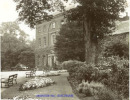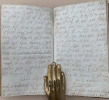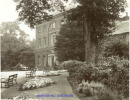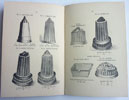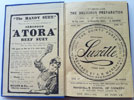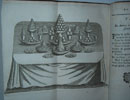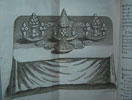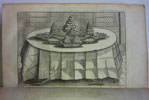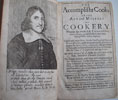Great Oakley Hall, Northamptonshire.
One 19th Century vellum bound volume.
204x165mm. Marbled paste-downs and end-papers. Loose first page which is a two column index of 73 recipes. First sixty pages are written recipes in black and brown ink in predominately two neat hands in an early Victorian script. 24 pages of tipped-in assorted recipes. 68 blank pages. At the back 22 pages of medicinal recipes. Two recipes are dated, #73, Stewed Rabbit - 1855 Jan. 22nd Oakley. and the last written recipe for Semolina Ghnocchi inscribed Mrs Symond. June 1894, - Internally quite clean, Fully bound in age dusted vellum with a 1 inch brown stain on the front cover. The hinge and guttering are cracked but holding well. Altogether a very interesting document with fine provenance.
- This manuscript recipe book belonged to Catherine De Capell Brooke of Great Oakley Hall, Great Oakley, Northamptonshire. The Hall has been the De Capell Brooke's ancestral home for over five centuries. The Brookes' are perhaps the most ancient family in Northamptonshire still living in their ancestral home. In 1472 William Brooke purchased a manor in the small village of Great Oakley . It is situated approx. 2 miles from Corby and 5 miles from Kettering. Much of Great Oakley has been in ownership of the Brooke Family since then. The present lord of the manor is Hugh de Capell Brooke, who lives with his family in Great Oakley Hall, which was extensively renovated in the 1960s. Although in recent years extensive new housing estates have been built at the top end of the village, a preservation order exists on all trees and stone houses in the village ensuring that some of the character of Great Oakley remains for future generations. Thomas Brooke is believed to have began building Great Oakley Hall in 1555. After the death in 1762 of Wheeler Brooke the estates descended to Mary Supple whose husband took the name of Brooke. Their son, Richard De Capell Brooke, Bart: was made a Baronet in June 20th 1803. His first son, Sir Arthur, the 2nd Baronet was a famous traveller and author. (died 1858). The second son, Sir William De Capell Brooke, Bart: (born 1801) succeeded to his brother's title and estate in 1858. A Barrister at Law, he died in 1897. In 23.4.1829 Sir William married Catherine [nee Watson] De Capell Brooke (born 1802), daughter of Lewis Thomas Watson, the 2nd Lord Sones. It appears Catherine started this cookery manuscript after she got married, and it further appears it was passed on within the family after her death on 24.11.1888. With the last date of 1894 recorded, we may assume it was written and in use from, circa 1829 - 1894. Considering these kind of items are handled fairly often, and used in a relatively hazardous and oily environment it has survived well. It is altogether a handsome and well maintained household book with interesting recipes and advice. Many come up for sale but without clear provenance. The dealer from whom I purchased this item also owned other documents and ephemera from Great Oakley. He also did most of the research on Catherine De Capell Brooke.
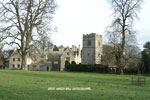


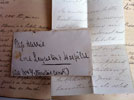
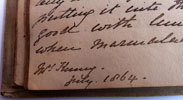
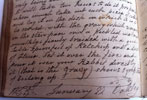
click on image to enlarge

Antiquarian category
ref number:
11158 